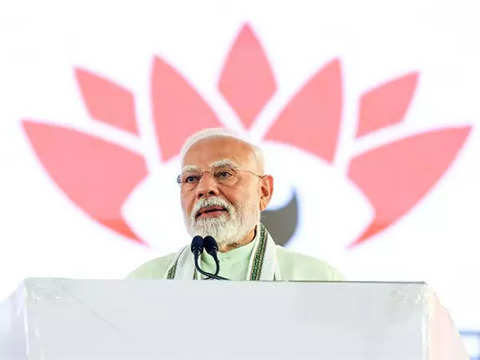PM Mudra Yojana’s Performance
The Pradhan Mantri Mudra Yojana (PMMY) continues to evolve as a key initiative for promoting entrepreneurship in India. Recent statistics reveal that the Gross Non-Performing Assets (GNPA) under the scheme slightly increased to 2.21% during the 2024-25 financial year. This marks a rise from 2.1% in the previous year. Despite this uptick, the GNPA remains lower than the peak of 3.61% recorded in 2020-21.
PM Mudra Yojana
Launched on April 8, 2015, by Prime Minister Narendra Modi, PMMY aims to provide collateral-free loans to small businesses. The scheme facilitates loans up to ₹20 lakh through Member Lending Institutions (MLIs). It caters to diverse sectors including manufacturing, trading, and services.
Categories of Loans
PMMY offers loans under three main categories – Shishu (up to ₹50,000), Kishore (₹50,000 to ₹5 lakh), and Tarun (up to ₹20 lakh). These categories target varying levels of entrepreneurial needs.
Recent Developments – Tarun Plus
In October 2024, the new ‘Tarun Plus’ category was introduced, doubling the loan limit to ₹20 lakh for borrowers who have successfully repaid previous loans under the Tarun category. This initiative has attracted around 25,000 beneficiaries within just four months, with loans amounting to ₹3,790 crore.
Gender and Inclusivity Focus
The scheme has a strong focus on inclusivity. Approximately 68% of loans have been granted to women entrepreneurs, while 50% have been allocated to SC/ST/OBC borrowers. This marks the government’s commitment to empowering underrepresented groups in the entrepreneurial landscape.
Financial Impact and Performance Metrics
Since inception, over 52.37 crore loans worth ₹33.65 lakh crore have been sanctioned. The average loan size has increased from ₹40,000 to ₹1.05 lakh. Notably, the average GNPA under the scheme has shown a downward trend, indicating improved repayment rates.
Future Targets and Expectations
The Centre is expected to set a target for loan disbursement between ₹5 lakh crore and ₹6 lakh crore for the 2025-26 financial year, reflecting continued confidence in the scheme’s effectiveness.
Role of Member Lending Institutions
Loans are extended by various MLIs including scheduled commercial banks, regional rural banks, small finance banks, non-banking financial companies, and microfinance institutions. This diverse lending ecosystem enhances accessibility for aspiring entrepreneurs.
Month: Current Affairs - April, 2025
Category: Government Schemes Current Affairs








